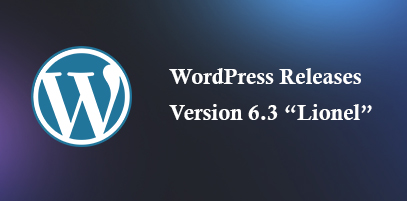Big Data Analytics
By :- Ilika - Web Guru Awards Team

Big information analytics is that the usually advanced method of examining huge information to uncover info -- like hidden patterns, correlations, market trends, and client preferences -- that may facilitate organizations to create abreast of business selections. On a broad scale, information analytics technologies and techniques provide organizations the simplest way to research information sets and gather new info. Business intelligence (BI) queries answer basic questions on business operations and performance.
Big information analytics could be a sort of advanced analytics, that involves advanced applications with components like prophetic models, applied mathematics algorithms, and what-if analysis steam-powered by analytics systems.
What is Big Data?
Big information could be a large number of information sets that can't hold on to, processed, or analyzed victimization ancient tools.
Today, their area unit innumerable information sources that generate information at a really fast rate. These information sources area unit gifts across the planet. a number of the most important sources of information area unit social media platforms and networks. Let’s use Facebook as an associate degree example—it generates quite five hundred terabytes of information each day. This information includes footage, videos, messages, and more.
Data conjointly exists in numerous formats, like structured information, semi-structured information, and unstructured information. for instance, during a regular stand-out sheet, information is classed as structured data—with a particular format. In distinction, emails represent semi-structured, and your footage and videos represent unstructured information. All this information combined makes up huge information.
Why is huge information analytics important?
Organizations will use huge information analytics systems and software package to create data-driven selections that may improve business-related outcomes. the advantages could embrace simpler selling, new revenue opportunities, client personalization, and improved operational potency. With an efficient strategy, these advantages will give competitive benefits over rivals.
Cost reduction. huge information technologies like Hadoop and cloud-based analytics bring important value benefits once it involves storing giant amounts of information – and they will establish a lot of economical ways that of doing business.
Faster, higher deciding. With the speed of Hadoop and in-memory analytics, combined with the flexibility to research new sources of information, businesses area units are ready to analyze info right away – and create selections that supported what they’ve learned.
New merchandise and services. With the flexibility to measure client wants and satisfaction through analytics comes the ability to grant customers what they require. Davenport points out that with huge information analytics, a lot of firms’ area unit making new merchandise to satisfy customers’ wants.
Benefits & benefits of huge information Analytics
1. Risk Management
Use Case: Banco American state Oro, a Phillippine financial organization, uses huge information analytics to spot deceitful activities and discrepancies. The organization leverages it to slender down an inventory of suspects or root causes of issues.
2. Development and Innovations
Use Case: Rolls-Royce, one every of the most important makers of jet engines for airlines and militia across the world, uses huge information analytics to research however economical the engine styles area unit and if there's needing for enhancements.
3. Faster and higher deciding at intervals Organizations
Use Case: Starbucks uses huge information analytics to create strategic selections. for instance, the corporate leverage it to make your mind up if a specific location would be appropriate for a replacement outlet or not. they'll analyze many various factors, like population, demographics, accessibility of the placement, and more.
4. Improve client expertise
Use Case: Delta Air Lines uses huge information analysis to boost client experiences. They monitor tweets to search out their customers’ expertise concerning their journeys, delays, and so on. The airline identifies negative tweets and will what’s necessary to remedy things. Public addressing these problems and giving solutions, helps the airline build smart client relations.
WHERE DID huge information ORIGINATE FROM?
Big information emerged from the early-2000s information boom, driven forward by several of the first net and technology firms. software package and hardware capabilities may, for the primary time in history, maintain with the large amounts of unstructured info created by shoppers. New technologies like search engines, mobile devices, and industrial machines provided the maximum amount of information as firms may handle—and the size continues to grow.
In a study conducted by IDC, the Market Intelligence firm calculated that the world production of information would grow 10x between 2015 and 2020.
With the astronomical growth in collectible information, it presently became evident that ancient information technologies like information warehouses and relative information bases weren't well-suited to control the flow of unstructured data. the first huge information innovation comes were open-sourced below the Apache software package Foundation, with the most important contributions returning from the likes of Google, Yahoo, Facebook, IBM, academia, and others. a number of the foremost wide used engines are:
Apache Hive/Hadoop (developed at Yahoo!, Google, and Facebook) is that the workhorse for advanced ETL and information preparation that services info to several analytics environments or information stores for additional analysis.
Different Types of huge information Analytics
Here area unit the four varieties of huge information analytics:
1. Descriptive Analytics
This summarizes past information into a kind that individuals will simply browse. This helps in making reports, sort of a company’s revenue, profit, sales, and so on. Also, it helps within the tabulation of social media metrics.
2. Diagnostic Analytics
This is done to know what caused a retardant in the 1st place. Techniques like drill-down, data processing, and information recovery area unit are all examples. Organizations use diagnostic associates as a result of the supply an in-depth insight into a specific downside.
3. Prophetic Analytics
This type of analytics appearance in the historical and gift information to create predictions of the long run. prophetic analytics uses data processing, AI, and machine learning to research current information and create predictions concerning the long run. It works on predicting client trends, market trends, and so on.
4. Prescriptive Analytics
This type of analytics prescribes the answer to a specific downside. Perspective analytics works with each descriptive and prophetic analytics. Most of the time, it depends on AI and machine learning.
Recent Topics
-
 WordPress.com Launches 100-Year Web Hosting Plan
WordPress.com Launches 100-Year Web Hosting PlanWordPress, the platform that helps people create websites, now offers something rare. It has taken a bold leap into the future with its 100-year web hosting plan. ...
Read MoreBy :- Laura Davidson
-
 5 Best AI Web Design Tools You Can Try
5 Best AI Web Design Tools You Can TryWhy bother with all the effort of creating websites manually when we have amazing AI tools? In fact, using these tools has become one of the most-practiced ...
Read MoreBy :- Tiana K
-
 Role of Animation and Micro-Interactions in User Experience
Role of Animation and Micro-Interactions in User ExperienceIn today's world, almost every brand wants to create a user-friendly interface for its customers. The main aim behind this is to increase customer base and revenue. Now, when it comes...
Read MoreBy :- Laura Davidson
-
 Web Design Trends to Watch Out for in 2024
Web Design Trends to Watch Out for in 2024Web design is a constant-evolving technology landscape. As a web designer, staying tuned with web design trends and keeping your designs up-to-date is important. These trends will affect ...
Read MoreBy :- Esther McGuinness
-
 The Power of Storytelling in Web Design Engaging Users with a Narrative
The Power of Storytelling in Web Design Engaging Users with a NarrativeStories never fail to engage listeners. That’s why web designers are leveraging the art of storytelling in their designs. In web designing, storytelling goes beyond merely usin...
Read MoreBy :- Navkiran Dhaliwal
-
 WordPress Releases Version 6.3 ?“Lionel”
WordPress Releases Version 6.3 ?“Lionel”WordPress 6.3 “Lionel” is out! Now, you’ll be able to create more beautiful and compelling websi...
Read MoreBy :- Tiana K
